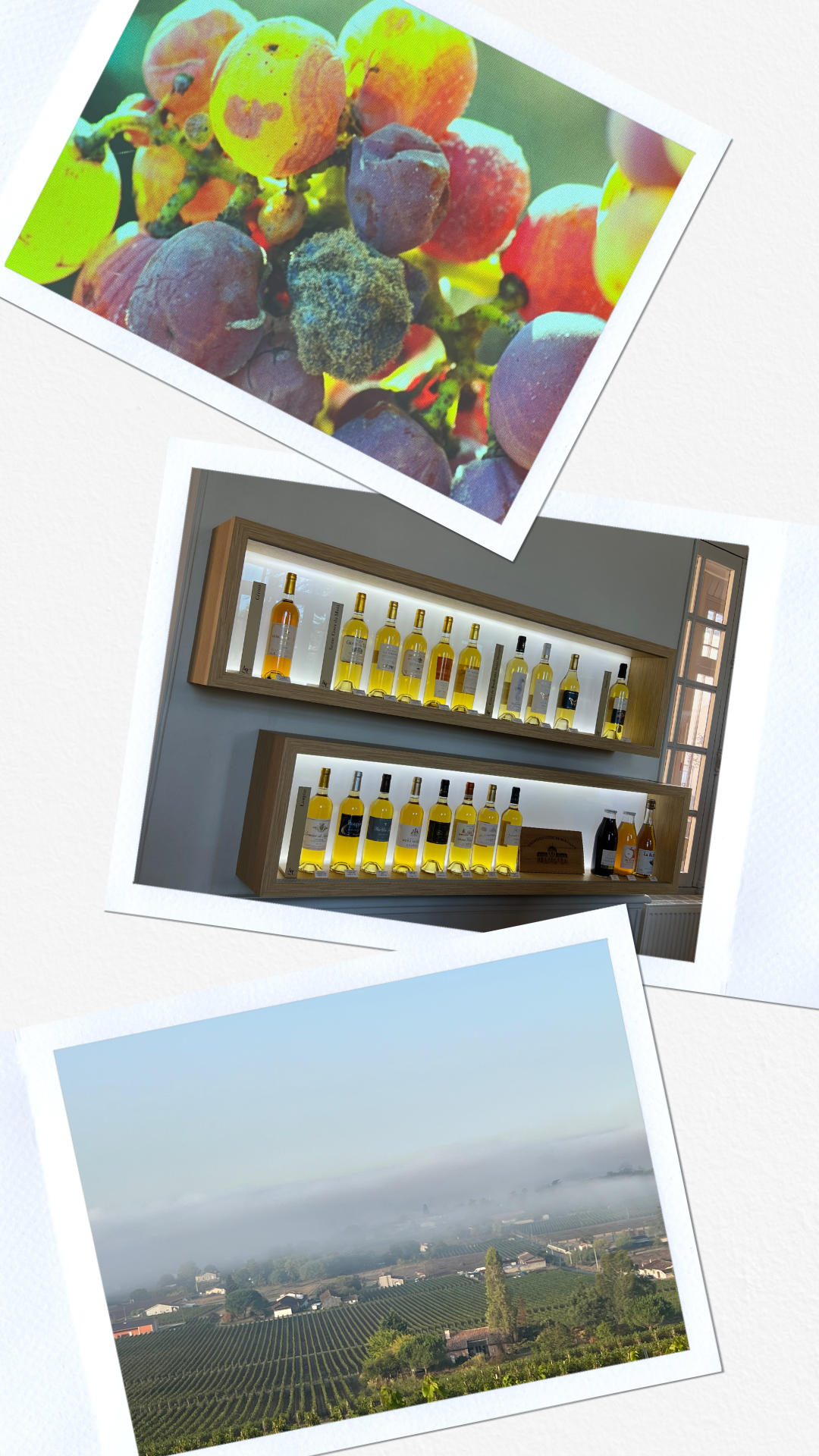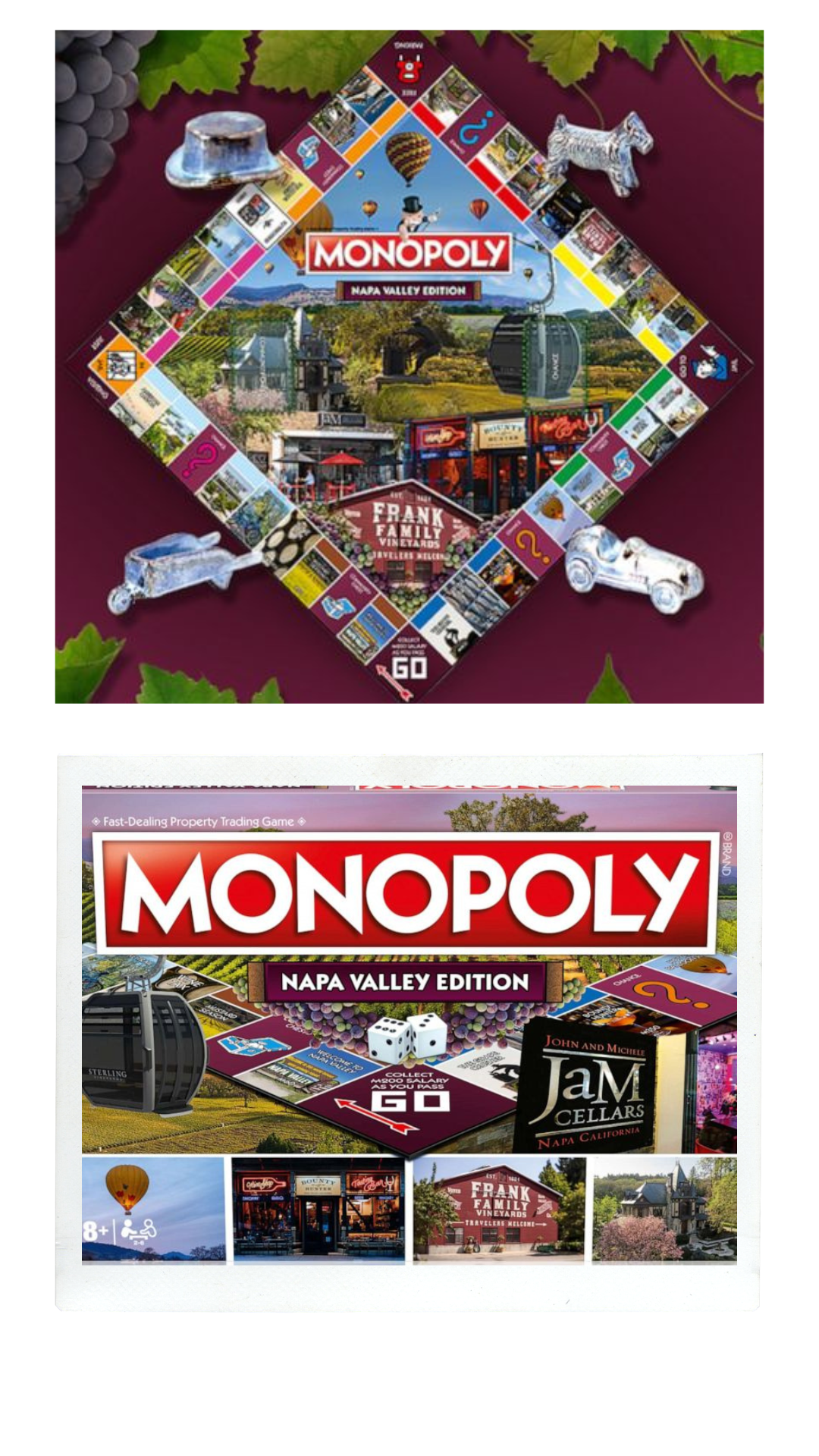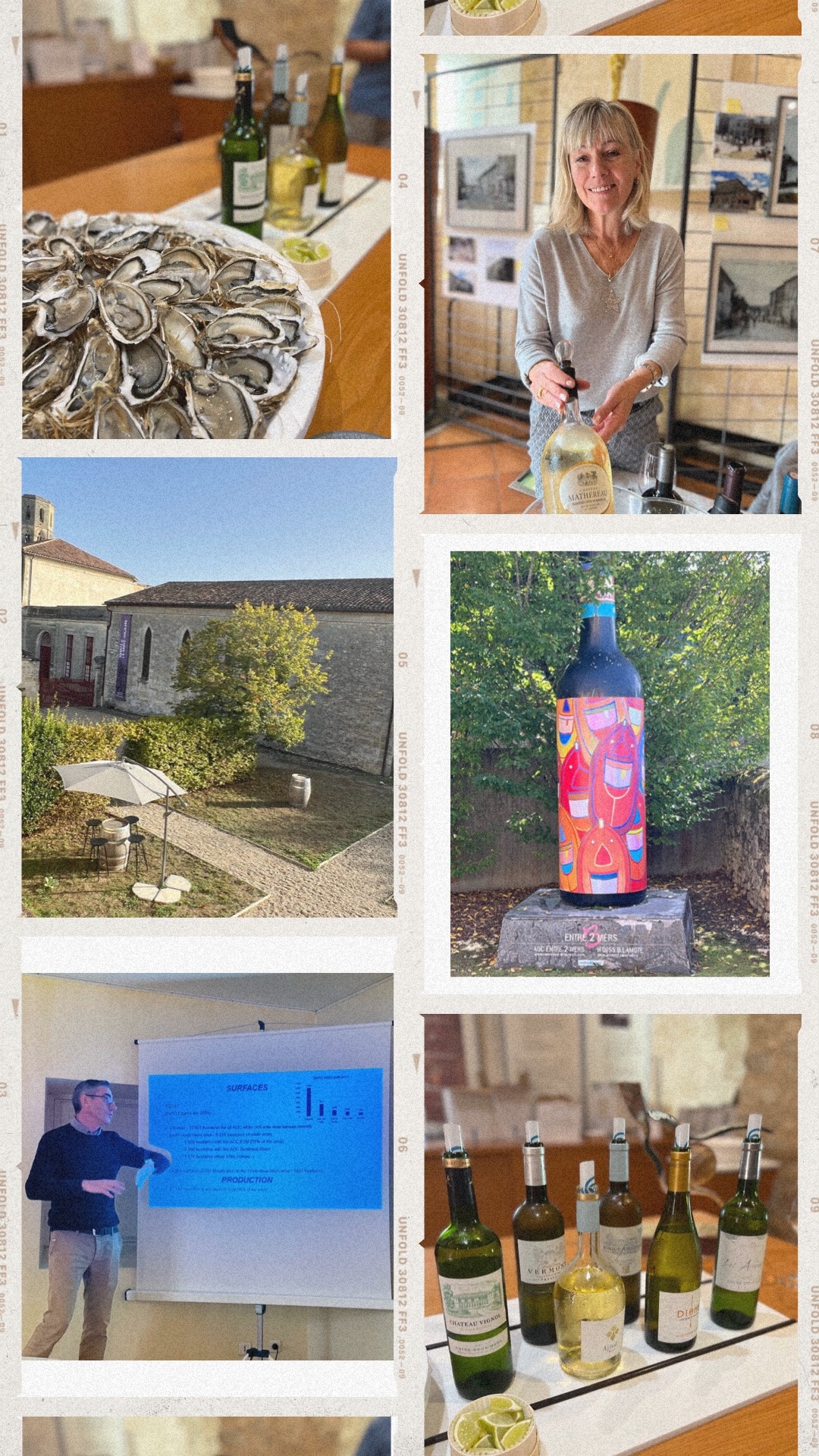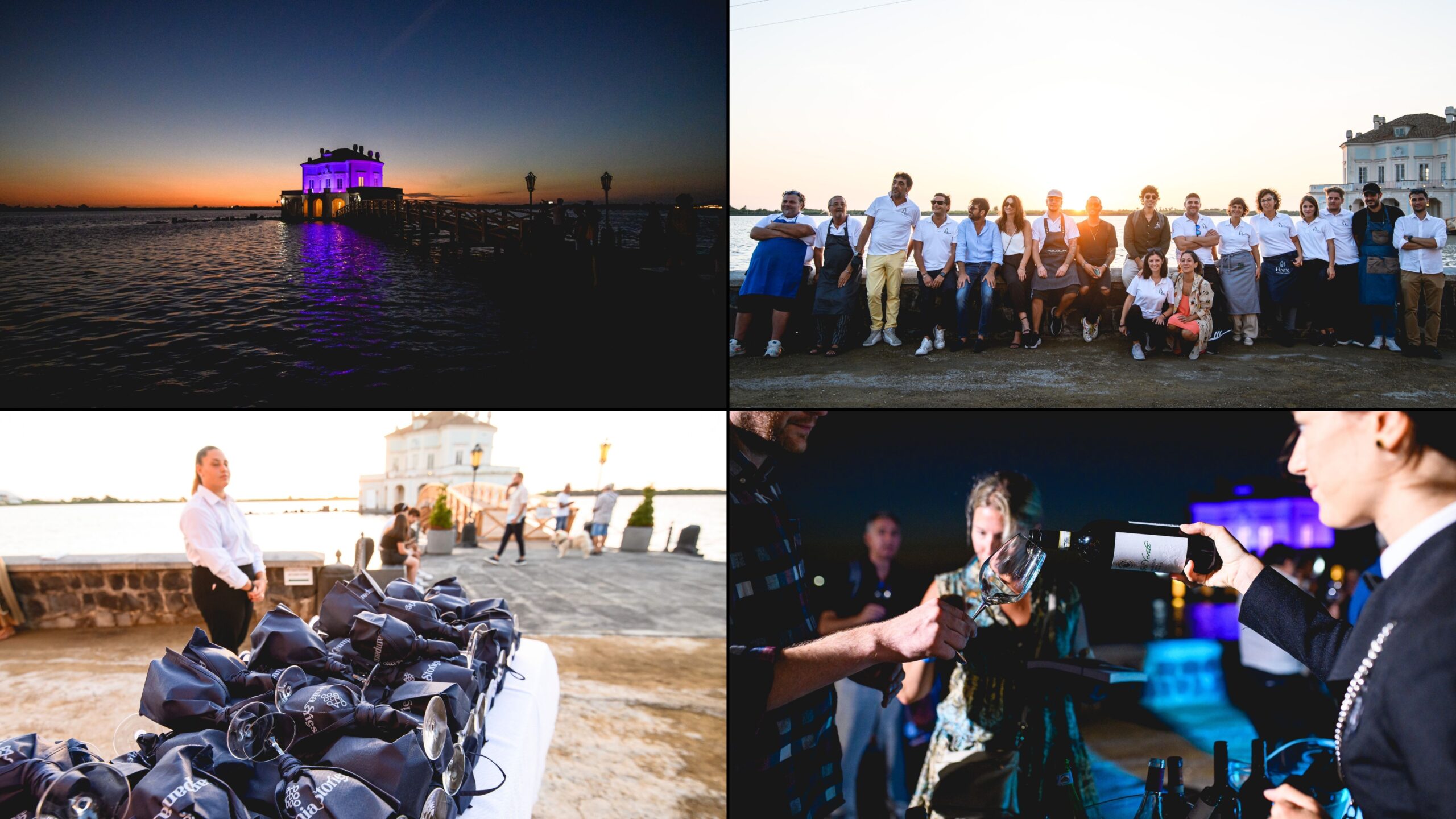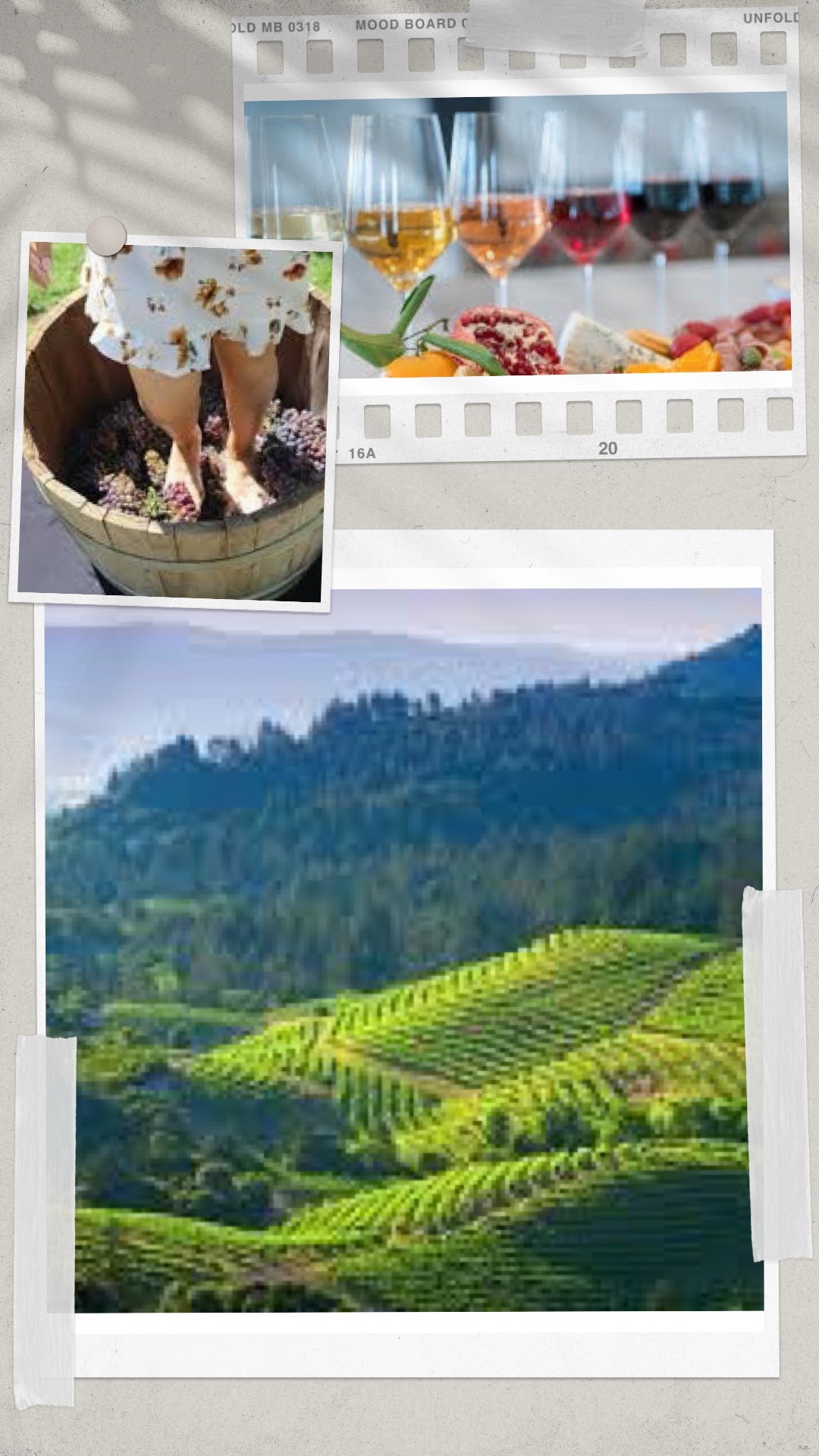Bordeaux has been producing sweet white wines since 1630 and at that time were considered an after-dinner drink by wealthy landowners who liked the sweet style. Recently these wines have become popular again among younger consumers, gourmands, and chefs.
The Grands Vins Liquoreux de Bordeaux or Union des Grands vins de Bordeaux Sweet was established in 2009. There are eight appellations and based on terroir, each focuses on a different interpretation of sweetness:
- AOP Cadillac – Sweet and subtle
- AOP Loupiac – Sweet and sensual
- AOP Saint Croix-du-Mont – Sweet and generous
- AOP Saint-Macaire – Sweet and tangy, medium sweet
- AOP Bordeaux Superior – Sweet and diaphanous
- AOP Bordeaux Moelleux – Sweet and fresh
- AOP Cerons – Sweet and refined
- AOP Premiers Cotes de Bordeaux – Sweet and elegant
Grape Varieties
The sweet white wines of Bordeaux tend to be a blend of Semillon, Sauvignon Blanc, and Muscadelle grapes. Semillon is the main grape varietal used; they have thin skins, and they easily get infected with Botrytis fungus. Semillon also adds texture to the wines. Sauvignon Blanc adds acidity and crispness to the wines. Muscadelle adds floral aromas to the wine blend.
What makes this wine different from other dessert wines is noble rot. This rot is caused by the fungus Botrytis Cinerea, which increases the wine’s natural sweetness.
Botrytis Cinerea
This starts in the vineyard, and the winemakers in these eight appellations are world-renown for their mastery in producing these wonderful wines. Also known as “Noble Rot”. Botrytis is a unique kind of fungus that affects the Semillon grape during fall season and before harvest. The affected grapes are sticky and full of aromatics, maintaining a shriveled appearance that evolves over time.
How this fungus attacks the grape clusters, and the length of time it takes to infiltrate the cell structure has a substantial effect on the aromas and flavors. As Botrytis spores expand, it depletes the juice from the grapes by 50%. While this improves the sugar concentration of the grape quite measurably, it also results in specific aromas coming from this” newly” crystallized fruit.
This is a natural process and it’s very rare that Botrytis will affect an entire grape cluster uniformly. Therefore, harvests are done by hand, over several passes sometimes 4-5 times, over days or weeks.
I was in the vineyards a few weeks ago and did a first pass picking for three rows. A second, third/fourth pass will occur some days later in order to finish picking the cluster.
I found out that the grape pickers hired must have experience to recognize a botrytis-affected grape and to know they are ready to be picked. This meticulous process has been refined for over 400 years.
This process is also called “successive selection” or “sorting”. This particular harvest process results in extremely low grape yields.
The Terroir
For Botrytis to affect the grapes both the soil composition and weather are equally important. These semi-sweet wines benefit from soils that are chalky with limestone, clay, gravel, and sand. There are also numerous microclimates, facilitated by the location of both the Garonne and Ciron rivers.
An essential element to the onset of Botrytis is the early morning mist, which I also witnessed a few weeks ago. What a magical moment! The mist appears exclusively in the fall season, preceding harvest. Usually by mid-day with much of the mist has been burned off by the sun.
The Numbers
There are 8 Appellations
1,800 Hectares of Vines [surface area]
350 Estates
1% of Bordeaux Volumes
2% of Bordeaux Area
84,000 Hectoliters Produced
9 Million Bottles Produced Each Year
38 % is Exported
@charmeu_usa @charmeu_canada and @vinsblancsdebordeaux_usa #loupiac #enjoyitsfromeurope #euAgriPromo #MadeintheEU #thecharmingtasteofeu #charmeu #cadillac #saintmacaire #cerons #saintecroixdumont #bordeauxsuperieur #premierescotesdebordeaux #bordeauxmoelleux #bordeauxwine #bordeauxwinelover #madeinfrance #wine #winelover #sweetwine #sweetwinelovers #sweetbordeauxwine #sweetbordeaux #winelife #winedestinations #womeninwine

